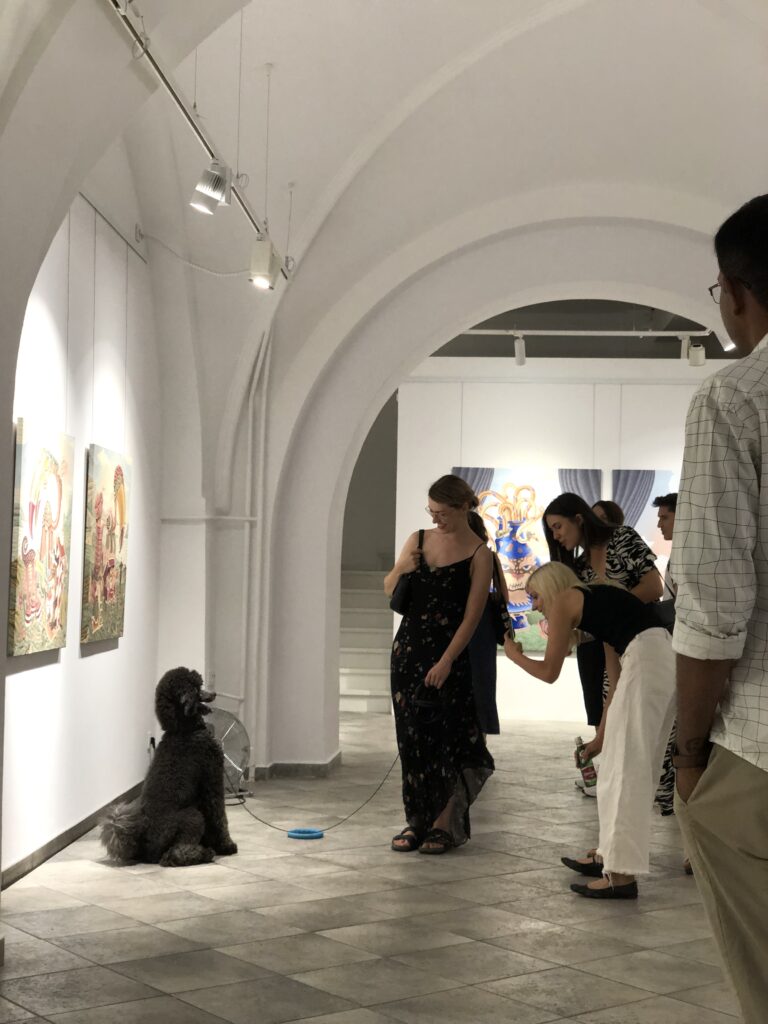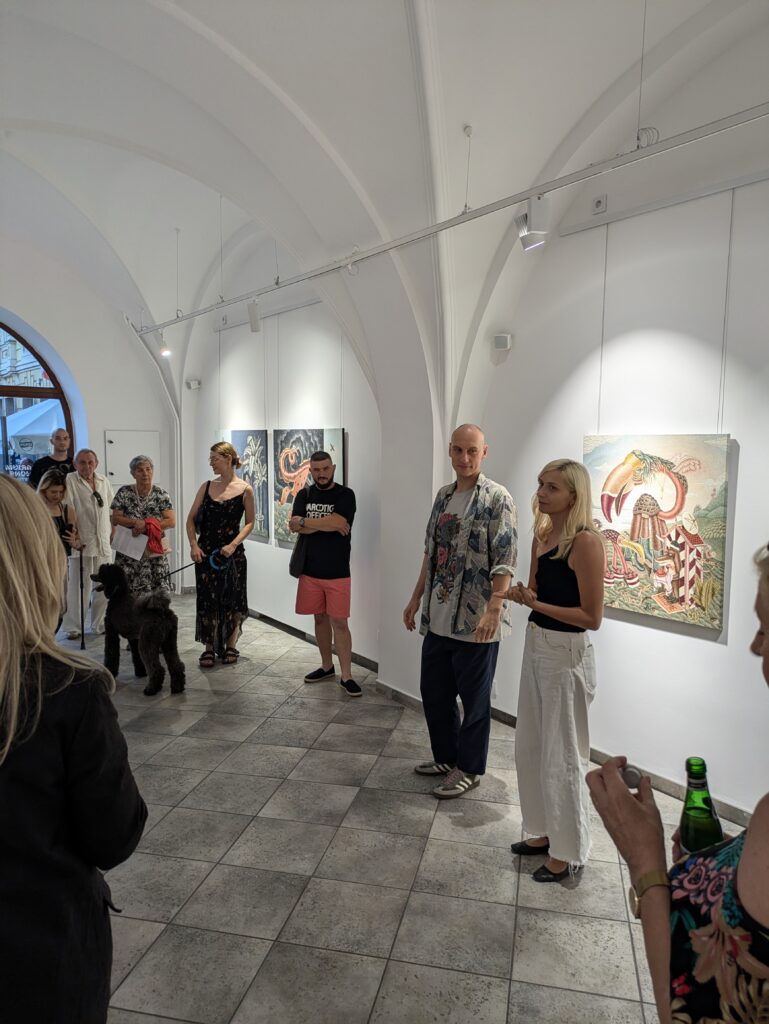On September 7, the much-anticipated opening of Tamed Bestiary by Dima Kashtalyan took place at MIA ART GALLERY in Wrocław.
Curated by renowned art historian Bogusław Deptuła, the exhibition drew art enthusiasts and friends from various cities, all eager to experience the artist’s extraordinary world.
This unique showcase features Kashtalyan’s signature technique of pointillism, blending intricate craftsmanship with surreal imagination. The hybrid creatures and fantastical narratives of his works have already captivated visitors, inspiring them to explore the boundaries between reality and dreams.
Originally scheduled to close on September 21, the exhibition has been extended until October 5 due to popular demand. Don’t miss the opportunity to immerse yourself in Kashtalyan’s remarkable vision.
We thank everyone who attended the opening and celebrated this special moment with the artist. Your support means the world!



Dreaming His World
Two elements that stand out most in Dima Kashtalyan’s paintings are his extraordinary imagination and remarkable technical skill. The artist has chosen an exceptionally time-consuming technique, using dots and pointillism as his artistic tools. In art history, this method is commonly known as pointillism, derived from the French word point, meaning “dot.” While one could label Dima a pointillist, such a term often evokes associations with late 19th and early 20th-century French art, especially with Georges Seurat, the creator and grand master of this technique. Dima Kashtalyan is well-acquainted with his French predecessor, just as he is with the artistic legacy of René Magritte, another of his favorite references.
Rather than predecessors, Seurat and Magritte serve as ongoing inspirations for the uniquely imaginative worlds Dima creates in each new painting. His works are meticulously crafted, populated with characters born from his vivid imagination—a mind filled with the wonder of a boy enchanted by the limitless possibilities of drawing whatever comes to mind. This freedom clearly delights and excites him.
Patient paper absorbs thousands, even millions, of black dots and lines. On canvas, these dots transform into color, but their palette remains muted—pinks, greens, blues, and reds, all filtered through a distinct tonal lens. This subdued coloration immediately distinguishes Dima Kashtalyan’s paintings, even at a glance.
Adding to this uniqueness is a bizarre bestiary of animal-like figures: cats, monkeys, snails, lizards, and birds. But it’s not that simple—monkeys often appear dressed as pink cats, cats mimic humans, and there are hybrid turtle-birds, bird-snails, serpent-birds, or even more complex lizard-bird-turtles. Larger feline creatures like lions, jaguars, or cheetahs appear in fantastical shades of blue or pink. Smaller hybrids abound too—worm-snails, beaked serpents, or imaginatively reimagined tiny birds of impossible forms. Humans also make occasional appearances. In one painting, the artist himself is visible, observing a scene he has just painted, seemingly surprised by it.
There are also peculiar, excessive elements: towering striped platform shoes, sandals with eye-shaped soles, oversized cowboy boots, or old-fashioned footwear that looks stretched and exaggerated, reminiscent of seven-league boots from fairy tales.
Equally striking is the omnipresent horror vacui—the fear of empty spaces. The artist clearly strives to ensure that no part of his canvas is left untouched. Even if no creature appears in a section, the surface pulsates with its dotted texture. When the setting is an interior, it is always adorned with additional paintings, further filling the space and creating a visual density. The paintings vibrate and swirl, drawing viewers into the whirlpool of their creator’s vision.
Dima himself describes his works as follows:
“My canvases are a painter’s diary, chronicling my journey as an artist and a person. They are a thoughtful dialogue with myself and the viewer. Through my works, I want to remind viewers to dream—dream of something great, barely within reach.”
His paintings vividly embody this pursuit of dreams—a quest for a personal world, for unique heroes unlike anything seen before, in one’s own dreams or anyone else’s. These dreams don’t have to be nocturnal—they can be waking dreams, too.
Bogusław Deptuła




Photo: Katarina Kashtalyan, Wojciech Chrubasik




